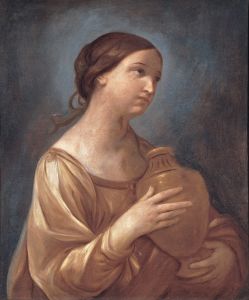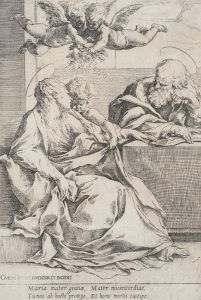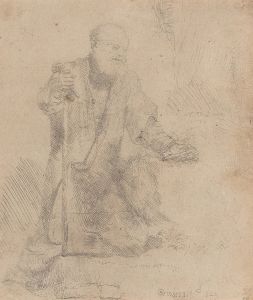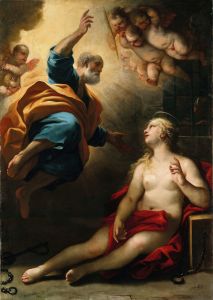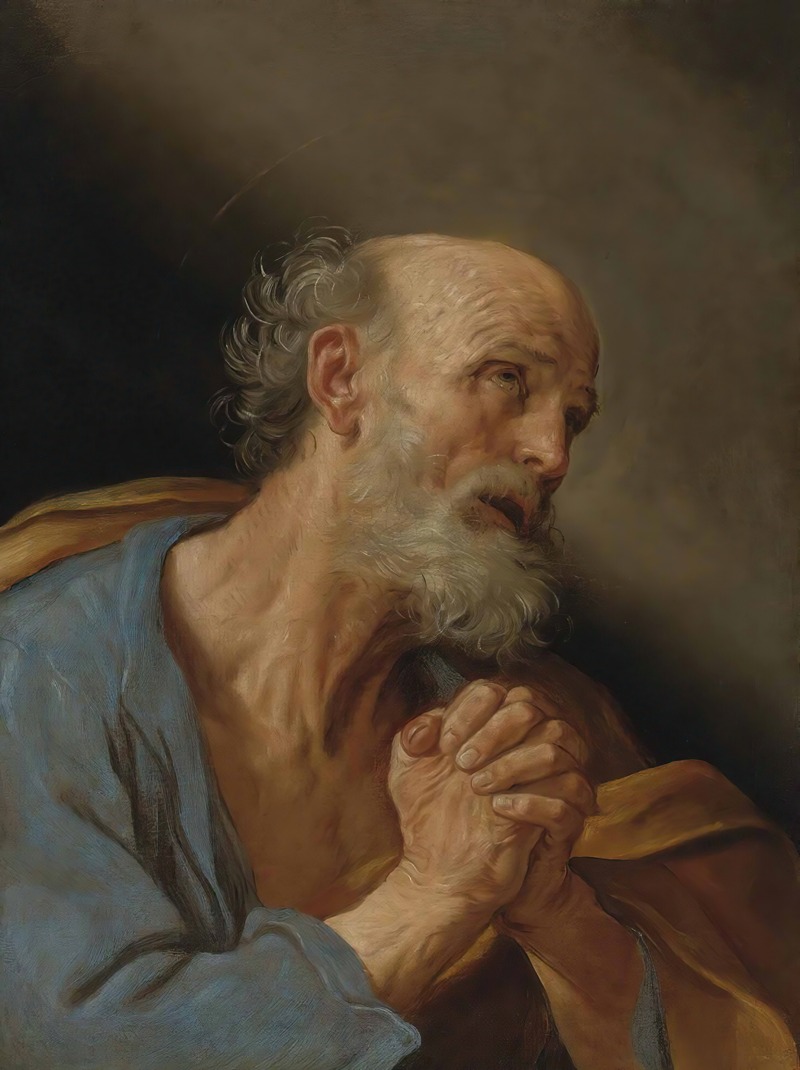
The Penitent Saint Peter
A hand-painted replica of Guido Reni’s masterpiece The Penitent Saint Peter, meticulously crafted by professional artists to capture the true essence of the original. Each piece is created with museum-quality canvas and rare mineral pigments, carefully painted by experienced artists with delicate brushstrokes and rich, layered colors to perfectly recreate the texture of the original artwork. Unlike machine-printed reproductions, this hand-painted version brings the painting to life, infused with the artist’s emotions and skill in every stroke. Whether for personal collection or home decoration, it instantly elevates the artistic atmosphere of any space.
"The Penitent Saint Peter" is a renowned painting by the Italian Baroque artist Guido Reni, created around 1600-1605. Reni, a prominent figure in the Baroque movement, was known for his ability to convey emotion and spirituality through his works, and this painting is a prime example of his skill in capturing human emotion and religious fervor.
The painting depicts Saint Peter, one of the twelve apostles of Jesus Christ, in a moment of deep repentance. According to Christian tradition, Peter denied knowing Jesus three times before the crucifixion, fulfilling Jesus' prophecy of his denial. This moment of remorse and penitence is a significant theme in Christian art, symbolizing forgiveness and redemption.
In "The Penitent Saint Peter," Reni portrays Peter with a sorrowful expression, his eyes cast upwards as if seeking divine forgiveness. The saint is shown with his hands clasped in prayer, a common gesture of penitence. Reni's use of light and shadow enhances the emotional intensity of the scene, with the light illuminating Peter's face, highlighting his expression of contrition and the depth of his spiritual struggle.
Reni's style in this painting reflects the influence of both the Carracci family, under whom he trained, and the dramatic chiaroscuro of Caravaggio, although Reni's approach is often noted for its grace and idealized beauty. The composition is relatively simple, focusing on the figure of Saint Peter without elaborate background details, which directs the viewer's attention to the emotional and spiritual essence of the scene.
The painting is characterized by its subdued color palette, which Reni often employed to convey a sense of solemnity and introspection. The use of soft, blended brushstrokes adds to the overall feeling of calm and contemplation, inviting the viewer to reflect on themes of repentance and forgiveness.
"The Penitent Saint Peter" is housed in various collections, with several versions attributed to Reni, a common practice for artists of the time who often created multiple iterations of popular subjects. The painting's enduring appeal lies in its universal theme of human fallibility and the hope for redemption, resonating with audiences across centuries.
Guido Reni's work, including "The Penitent Saint Peter," played a significant role in the development of Baroque art, influencing subsequent generations of artists. His ability to convey complex emotions through simple yet powerful imagery continues to be celebrated, and his paintings remain important works in the study of religious art and Baroque aesthetics.







